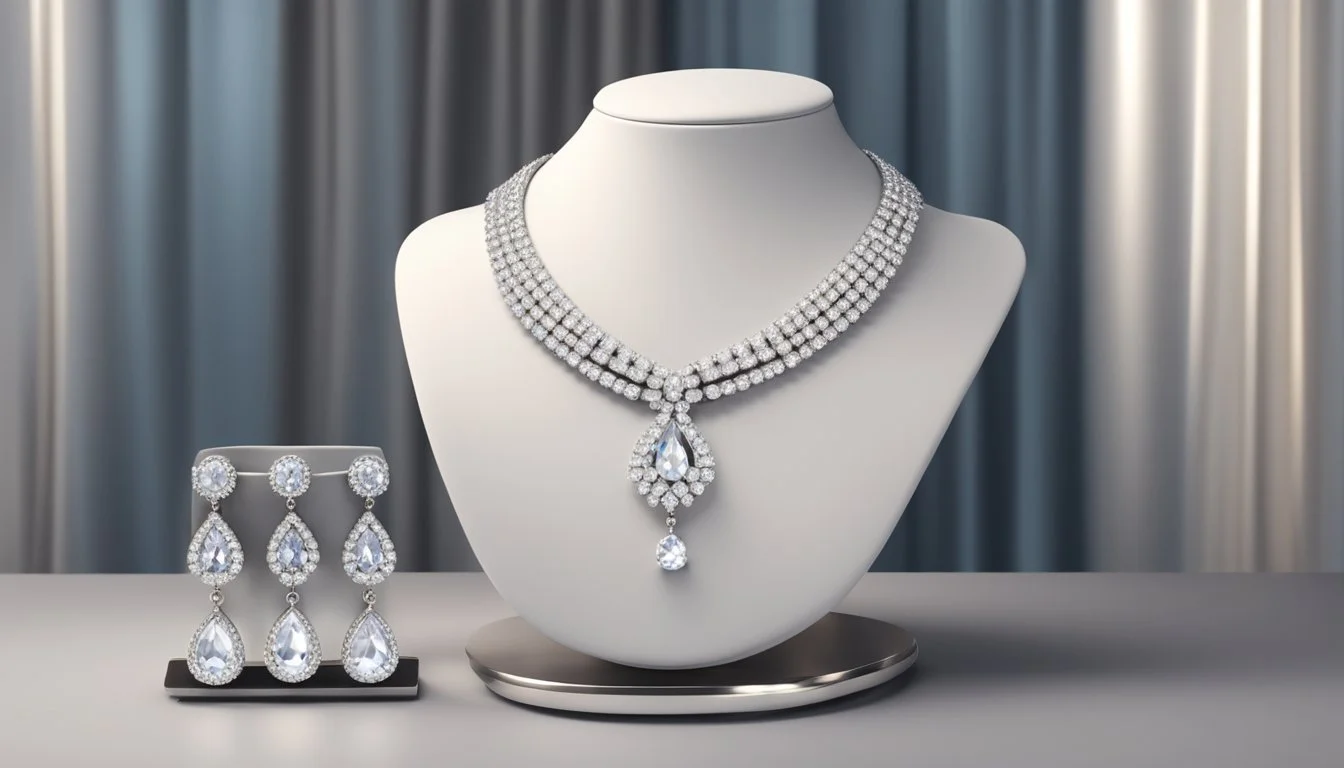Dana Sue Gray: 5 Luxury Items Purchased by the Thrill Killer Nurse After Each Murder
A Chilling Look at Criminal Spending
Dana Sue Gray, a former nurse turned serial killer, shocked California in the early 1990s with her brutal crimes. Her case gained notoriety not only for the violent nature of her attacks but also for her unusual motive: the pursuit of luxury and material goods.
Gray's murders were followed by shopping sprees using her victims' credit cards, highlighting a disturbing connection between her violent acts and her desire for high-end items. This pattern of behavior set her apart from many other serial killers and raised questions about the psychological factors driving her crimes. The luxury purchases made after each murder provide a chilling glimpse into the mind of this unique criminal.
1) Chanel Boy Bag
The Chanel Boy Bag, introduced in 2011, quickly became one of the fashion house's most coveted designs. Its popularity stems from its distinctive blend of classic Chanel elements and modern edge.
Inspired by Coco Chanel's love for masculine style, the Boy Bag features a structured shape and bold hardware. The bag's signature lock showcases the interlocking CC logo, giving it an instantly recognizable look.
Available in various sizes, the Boy Bag ranges from small to large. The most popular sizes include the Small (20 x 12 x 8 cm), Old Medium (25 x 15 x 9 cm), and New Medium (28 x 18 x 9 cm).
Chanel offers the Boy Bag in a wide array of materials, colors, and finishes. From classic quilted leather to exotic skins, the options cater to different tastes and occasions.
As a luxury item, the Chanel Boy Bag commands high prices. Its desirability and limited availability contribute to its status as a sought-after accessory among fashion enthusiasts and collectors alike.
2) Rolex Submariner Watch
Dana Sue Gray purchased a Rolex Submariner watch after one of her murders. The Submariner is an iconic luxury timepiece known for its durability and precision.
First introduced in 1953, the Submariner was designed as a dive watch for professional use. It features a waterproof case and can withstand depths up to 300 meters.
The Submariner's distinctive look includes a rotatable bezel and luminous hour markers. These elements allow divers to track their time underwater accurately.
Over the years, the Submariner has become a symbol of prestige beyond its practical origins. It is highly sought after by watch enthusiasts and collectors.
Rolex continues to refine the Submariner, incorporating new materials and movements. Recent models feature ceramic bezels and improved luminescent displays.
The Submariner's enduring popularity has made it a frequent target for counterfeiters. Authentic models command high prices on both the retail and secondary markets.
By choosing this watch, Gray demonstrated her desire for luxury items and her willingness to spend significant sums on her post-crime indulgences.
3) Versace Barocco Silk Scarf
Dana Sue Gray acquired a Versace Barocco silk scarf after one of her murders. This luxurious accessory showcases Versace's iconic Barocco print, a hallmark of the brand's opulent aesthetic.
The scarf is crafted from high-quality silk, known for its lustrous sheen and soft texture. It typically measures 27.5 inches square, making it versatile for various styling options.
Versace's Barocco pattern features elaborate swirls and ornate designs inspired by baroque art and architecture. The intricate motifs often incorporate the brand's signature Medusa head logo.
These scarves are produced in Italy, reflecting Versace's commitment to craftsmanship. They are usually dry clean only due to the delicate nature of the silk fabric.
The Barocco silk scarf is a coveted item among fashion enthusiasts. It serves as both a statement piece and a symbol of luxury, aligning with Gray's desire for high-end goods.
Versace offers these scarves in various colorways, allowing for different interpretations of the classic Barocco design. The scarf's versatility makes it suitable for wear around the neck, as a hair accessory, or tied to a handbag.
4) Hermès Birkin Bag
The Hermès Birkin bag stands as one of the most coveted luxury items in the world. Known for its exquisite craftsmanship and exclusivity, this handbag carries a hefty price tag often exceeding $10,000.
Dana Sue Gray reportedly acquired a Birkin bag following one of her crimes. This purchase aligns with her pattern of seeking high-end items after committing murders.
Obtaining a Birkin bag is notoriously difficult, even for those with substantial financial means. Hermès maintains strict control over their distribution, often requiring customers to have a purchase history with the brand.
The scarcity of Birkin bags has led to legal disputes. In 2024, two California shoppers filed a lawsuit against Hermès, claiming the company unfairly restricts access to these sought-after accessories.
Despite controversy, the Birkin bag's allure persists. Its association with wealth and status makes it a prime target for luxury-obsessed individuals like Gray, who sought to elevate her lifestyle through criminal means.
5) Tiffany & Co. Diamond Necklace
Dana Sue Gray's final luxury purchase was a Tiffany & Co. diamond necklace. This prestigious piece of jewelry represented the pinnacle of her spending spree.
Tiffany & Co. is renowned for its exquisite craftsmanship and timeless designs. The company has been creating fine jewelry since 1837, establishing itself as a symbol of luxury and sophistication.
Diamond necklaces from Tiffany & Co. are particularly coveted for their brilliance and quality. These pieces often feature meticulously selected diamonds set in precious metals.
Gray's choice of a Tiffany diamond necklace likely reflected her desire for the ultimate status symbol. Such a purchase would have been a significant expenditure, potentially costing thousands of dollars.
The acquisition of this high-end jewelry item marked the culmination of Gray's criminal activities. It demonstrated her escalating taste for luxury goods and her willingness to go to extreme lengths to obtain them.
Dana Sue Gray's Background
Dana Sue Gray's life experiences shaped her path from childhood through her nursing career. Her upbringing, professional choices, and personal relationships provide context for understanding the woman behind the shocking crimes.
Early Life
Dana Sue Armbrust was born on December 6, 1957, in California. Her parents were Russell Armbrust, a hairdresser, and Beverly Joyce Hetzel, a former beauty queen and MGM starlet.
Dana was an only child, born after her parents experienced several miscarriages. This may have contributed to a complex family dynamic.
Her mother was described as aggressive and domineering, potentially influencing Dana's personality development.
Career as a Nurse
Gray pursued a career in nursing, a profession that typically requires empathy and caregiving skills. She worked as a licensed vocational nurse in California.
Her choice of career stands in stark contrast to her later actions. The nursing profession gave her access to vulnerable individuals and medical knowledge.
It's unclear how long she worked as a nurse or if there were any issues during her career prior to her crimes.
Personal Life
Gray married and divorced twice before her crime spree began. Her relationships appeared unstable, though details about her marriages are limited.
She developed a taste for luxury items and shopping, which later played a role in her criminal motivations.
Gray's personal life was marked by financial difficulties, despite her professional qualifications. This financial strain may have contributed to her eventual turn to crime.
Crimes and Victims
Dana Sue Gray committed a series of murders and robberies in California during the early 1990s. Her victims were primarily elderly women, and her crimes were motivated by a desire for material gain and a reported "thrill" from killing.
Timeline of Murders
February 28, 1994: Gray murdered 86-year-old Norma Davis in Lake Elsinore, California. Davis was strangled with a telephone cord.
March 8, 1994: Gray killed 87-year-old June Roberts in her home. Roberts was beaten and strangled.
March 10, 1994: Gray attempted to murder 57-year-old Dorinda Hawkins at an antique shop. Hawkins survived the attack.
March 16, 1994: Gray murdered 66-year-old Dora Beebe in her condominium. Beebe was stabbed multiple times.
Victim Profiles
Gray's victims were predominantly elderly women living alone. Norma Davis and June Roberts were both in their late 80s and resided in their own homes.
Dora Beebe, the youngest murder victim at 66, lived in a condominium.
Dorinda Hawkins, the sole survivor, was 57 and working at an antique shop when attacked.
All victims lived in or near Lake Elsinore, California, suggesting Gray's familiarity with the area.
Murder Motives
Gray's primary motive was financial gain. After each murder, she stole credit cards and personal belongings from her victims.
She used these stolen items to fund shopping sprees, purchasing luxury goods and services.
Gray also reported experiencing a "thrill" from killing, classifying her as a thrill killer. This psychological element combined with her financial motivations to drive her crime spree.
Her background as a nurse may have influenced her victim selection, as she targeted vulnerable individuals she could easily overpower.
Legal Proceedings and Sentencing
Dana Sue Gray's crimes led to a complex legal process involving investigation, arrest, trial, and sentencing. Her case attracted significant attention due to the unusual nature of her murders and motives.
Investigation
Authorities began investigating a series of suspicious deaths of elderly women in Southern California in early 1994. They noticed a pattern of credit card fraud following each death. Surveillance footage from stores where the stolen cards were used provided crucial evidence. Detectives traced purchases to Dana Sue Gray, a former nurse. They also discovered Gray had personal connections to some of the victims.
Arrest and Trial
Police arrested Gray on March 16, 1994. She initially denied involvement but later implicated herself in June Roberts' murder during interrogation. Gray entered an insanity plea on March 10, 1995. Her trial was delayed multiple times as she underwent psychiatric evaluations. Prosecutors sought the death penalty. Gray's defense team argued she suffered from mental illness and was not fully responsible for her actions.
Sentencing
On September 9, 1998, Gray changed her plea to guilty. She admitted to murdering two women and attempting to murder another. By accepting a plea deal, she avoided the death penalty. The judge sentenced Gray to life in prison without the possibility of parole. She received two consecutive life terms plus 20 years. Gray, then 40 years old, showed no emotion as the sentence was read. The victims' families expressed relief that the case had concluded without a lengthy trial.









